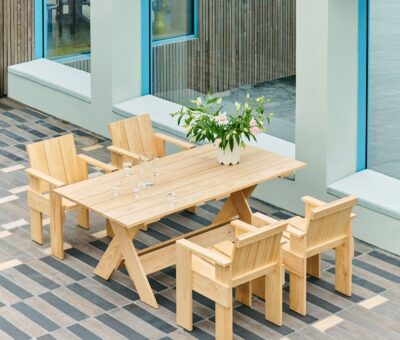Casarredo Casa Inspirata: What Is Your Decor Style?
What is your decor style? We asked Tracey-Lee, the Head of Projects & Design at Casarredo to share some of her knowledge about the different design styles that continue to make a mark in the world of interior decor. Here is what she had to say…
Traditional
Traditional furniture generally is what people refer to as ‘homey”. Its origins are European, with a focus on comfort, grace and craftsmanship. Traditional furniture has a very regal aesthetic since it was meant to mimic furniture of royal monarchies.
With hand-carved, dark stained and ornate detailing, these pieces are meant to be sturdy for generations to come.
Tiny history lesson: The taste for traditional furniture was brought to the U.S with the formation of the thirteen American colonies, BUT after the Revolutionary War, the Americans put their own stamp on the style: One such trademark being the patriotic inclusion of the bald eagle in many pieces.
Traditional Examples:
Left to Right: Victorian, French Provençal, Tudor, Georgian, Louis XV and and Queen Anne
Modern
The Modern movement started in the 1920’s and became popular after World War II due to its ideals towards practicality, functionality and cutting the excess. Modernism is all about rejecting ornament and embracing minimalism.
Modern Style existed on the principle that “Form follows function”. The style embraced the use of factory technology to use materials such as steel, glass, moulded plywood and plastics. Clean lines and simple design were at the heart of Modern design, and it aimed to be accessible and produced quickly.
Modern despite what it sounds like, is not whatever the current style is. “Modern” is the name of the movement with principles that were applied to furniture, architecture and many other forms of design.
Modern Examples:
Barcelona Chair, Egg Chair, Le Corbusier and Walter Gropius leaders in Modernist Architecture
Mid-Century Modern
Mid-century modern is a subcategory to the Modern movement that took place at a specific point in time – mainly from the 1930’s to the mid 60’s. This style although following the same standards as the Modern movement, took the chance on organic forms and an array of colours into their design. A lot of Mid-Century furniture was designed to be multi-functional; it could nest, stack, fold, bend or be interchangeable. Materials typically were plastic, wood, Lucite, glass and plexiglass.
Mid-century modern wasn’t coined until after the movement had ended – it comes from the book “Mid-Century Modern: Furniture from the 1950’s” (Random House) by Cara Greenburg in 1983.
Fondly known as the Eames Era!
Will Mid Century ever go out of style? I doubt it! These designs have an incredible way to transform a space into something quite spectacular!
Mid Century Examples:
Left to Right: Ludwig Mies van der Rowe Lounge chair and Eiffel base Shell chair- Charles and Ray Eames
Transitional
Transitional style is what happens when traditional and modern start dating. It’s a happy medium between the two, where the curves and grace of traditional are welcomed, all the while keeping up with the functionalism and clean lines of modernism. It is considered to be an equal meeting of masculine and feminine, becoming all-encompassing. Transitional style aims to be timeless, clean and sophisticated.
You will also find a big influence of the ART Deco, Art Nouveau or Cubism moment into the finishes we now use. The explosion of Wallpaper, chrome plating, marble and Geometric patterns have long surpassed the Niche period and was the cornerstone of transitional style.
The beauty of this style is that you don’t need specific items to style a transitional room. Mix and match traditional and modern pieces in your space to create an overall transitional look that compliment’s your own taste.
Transitional Examples:
Left to Right: RC, Fendi, Malerba
About the author: Tracey-Lee is the Head of Projects & Design at Casarredo and has been in the industry for 15 years, working on everything from small to large projects, locally and abroad – all with a common denominator where she adds her eclectic style and love for customization tailored to each specific client.
Contact: Casarredo
You might also like...
-
Bitalian: A Significant Partnership with Rugiano

Bitalian is honoured to have introduced the exquisite craftsmanship of Rugiano to South Africa, marking a significant chapter in the company’s history of partnerships with ...
-
Celebrate the Festive Season with SpaceSave: Maximizing Home Space for Joyful Get-Togethers

As the year draws to a close, the festive season ushers in a time of joy, reflection, and, most importantly, togetherness. It’s a period marked ...
-
Inova Contracts: Crate Collection

Celebrating Dutch designer Gerrit Rietveld’s 1934 Crate Collection, Rietveld Originals and Hay recently relaunched a respectful interpretation of the original designs. Based on a similar ...






























